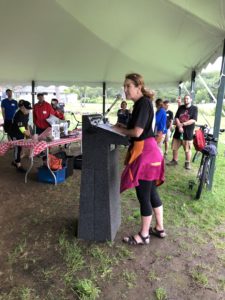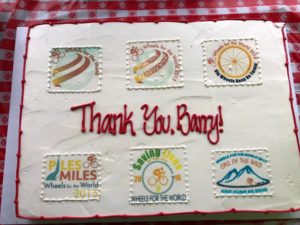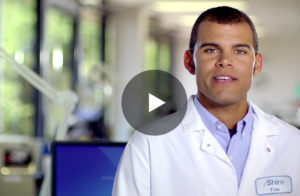Laurie Kelley
September 2, 2018
Published in August 2018 PEN
With the start of the school year comes new teachers, nurses, and caretakers for your child. You may be explaining to many adults what hemophilia is and how they should properly respond if your child has an issue. But, how do you go about teaching your child about their hemophilia? In this excerpt from our latest issue of PEN, we delve into how children understand their bleeding disorders and what you can do to help present information for them to digest.
Teaching Your School-Age Child About Hemophilia
One of the biggest challenges we have as parents of children with hemophilia is teaching our children about their disorder. We often use words like hematoma, factor, and deficiency; and concepts like prophy, coagulation, and heredity. But children understand these words and concepts very differently than adults do.
If you don’t know how your child’s mind works at various stages of his development, then teaching him about hemophilia becomes hit-or-miss. But when you know how he thinks, you can tailor information in a way that he can easily understand. So to teach your child about hemophilia, you need to know how he processes his world in general, and hemophilia concepts in particular.

The School-Age Child’s Thinking Tools
Between ages 7 and 11, the school-age child is in a fascinating stage of cognitive development. “Cognitive” refers to how he thinks, how he processes incoming information about his world—basically, his ability to think logically. Just as he has a skeletal structure that develops as he grows, he also has a mental structure that develops as he matures, filtering information in a way he can grasp.
Your child’s mental structure is characterized by five major thinking tools that are constantly evolving:
Causal thinking: Figuring out when something causes something else, using a step-by-step process. A preschooler doesn’t typically think step-by-step.
Internalized thinking: Moving from understanding his world mainly through his senses—where things happen outside him—to realizing that things can happen inside him.
Gradient thinking: Knowing that the world isn’t just polar opposites, like good guys and bad guys. There are now shades of gray, degrees of intensity. A good guy might do something bad. Your child can also distinguish parts from the whole.
Empathic thinking: Starting to see the world from another’s point of view.
Time: Understanding that he doesn’t exist just in the present, but that he has a past and a future.
For understanding hemophilia, the most important of these five thinking tools may be causal thinking. Your child can now try to figure out how one thing causes another. Like…What causes bleeding? A blood clot? What is genetic transmission? It’s hard to explain these concepts when your child doesn’t understand causality. These are more sophisticated thinking tools than he had as a preschooler, yet a school-age child, ages 7 to 11, is most comfortable using his new thinking tools on things and places he knows best—the tangible, visible world. So let’s see how he uses these thinking tools on various topics in hemophilia, starting with blood.
How He Understands Blood
Unlike a preschooler, your school-age child understands the concept of the whole and its parts. So you can explain blood in terms of what it’s made of. Children between ages 7 and 9 believe that blood is a red liquid, but also that it’s composed of “stuff—water, food and energy.” Children between ages 9 and 11 tend to describe blood in more abstract terms. “It’s cells. Little roundish stuff. They’re red and blue.” A child develops from concrete to more abstract thinking, so this is perfectly acceptable!
Now you can introduce the idea that blood has components: white blood cells, red blood cells, and platelets. While preschoolers focus on things outside the body, mainly what they can see, hear, and feel, a school-age child realizes there are things inside him that he can’t see. So he’s ready to learn about simple blood components, especially those related to his hemophilia.
How He Understands Hemophilia
Because he understands a whole and its parts, your child can now categorize things. A preschooler might describe hemophilia as “blood,” or “something I have,” but a school-age child can classify hemophilia as a “blood disorder,” or “when blood doesn’t stop bleeding.”
He also progresses from describing hemophilia as his own specific injury (“It’s when I get a hurt knee”) to seeing it as a condition (“It’s when someone gets hurt and bleeds a lot”). This is the empathic thinking tool: he knows he is not the only one to have hemophilia. He now says that hemophilia is when “boys with hemophilia have to go to the hospital sometimes.” Compare this to the preschooler reply, “When I have to go to the hospital.”
Your child also has matured from an external to a more internal focus. A preschooler might say, “Hemophilia is bruises,” but a school-age child will say, “My blood doesn’t work right.” What is it that doesn’t work right? Well, he understands the concept of a whole and its parts, and he’s ready to know that blood is composed of parts. So he can deduce that hemophilia means “something’s missing” in his blood. Some children say that they have “lost” something, or that their blood is “too thin.” These answers reflect the “something’s missing” idea. For example, “It’s when you’re missing some factors that help to make it so if you slam your knee against something it doesn’t swell up as much. You’ll have to replace the factor.”
Misconceptions and medical inaccuracies abound as your school-age child struggles to understand hemophilia. “It’s a blood disease. You lose part of your blood and you need to get more blood.” At this stage, what’s important is not so much that his answers are right or wrong, but how he arrives at his interesting conclusions.
So teach your child that hemophilia is a “blood disorder.” Teach him that blood is made up of parts, and that he is “missing” a part. There’s no need to get too specific at first, for example by mentioning factor and proteins; just stick to general concepts and ideas. To help him visualize, use a concrete example, like the falling dominoes. Remember that a school-age child is increasingly able to understand more abstract terms, but he needs the help of concrete examples.
How He Understand Genetics
Learning about heredity is a great way to exercise the “missing step” concept in a step-by-step sequence. To a preschooler, hemophilia is just something he was born with. To a school-age child, something had to happen to cause hemophilia.
What is that something? His parents are usually the missing step. Your child possesses the thinking tool of time, so he may realize that hemophilia could have started in his family many years ago, even centuries ago.
But how exactly does hemophilia get from one person to another? Most school-age children name a causal agent—the thing or event that caused hemophilia to happen. This can be a parent, blood, a chromosome, sperm, or even “vibes,” as one boy phrased it.
Understanding often differs among younger children (ages 7–9) and older children (ages 10–11). When asked how they got hemophilia, younger children may simply reply, “Mom” or “Mom and Dad.” Some children name blood. “It streams through your family, through their blood. I got it when I was two or three. My uncle gave it to me.” This child is medically incorrect, but he’s trying to sort it out logically: a family member had hemophilia, I have hemophilia, and…maybe my uncle gave it to me?
School-age children may also understand or accept some basic heredity rules, such as “mothers are carriers.” This makes sense to them, because a “carrier” is a causal agent.
From ages 9 through 11, a child’s answers and thought processes become more sophisticated. The causal agent may be chromosomes, which only a few children can discuss at this stage. Remember that school-age children are still very concrete—more comfortable with things that they see, hear, feel, and smell. Chromosomes are abstract. Some children identify an “X thing” as the causal agent, but don’t understand the idea in purely scientific terms. To them, X and Y are not parts of the cells. They’re more like “germs” that other family members “catch.” One boy explained, “Mom’s a carrier. She has two little things inside her, little Xs. They’re like little eggs. She has a good X and a bad little X in her. My brother got the good carrier and I got the bad carrier.”
Ask your child, “Where did your hemophilia come from?” and let him figure it out on his own; don’t judge his answer at first or try to answer for him. You can work on the details later, supplying more accurate information once you’ve listened to his explanation and understood his thinking.
To read more on this topic download our August 2018 PEN today at
https://www.kelleycom.com/product-category/newsletters/pen/
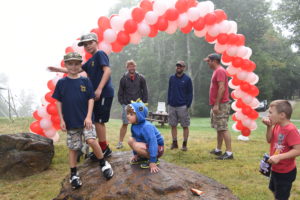

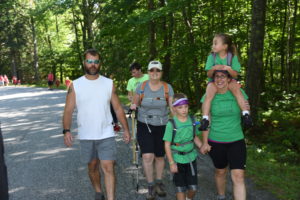

 well connected.
well connected.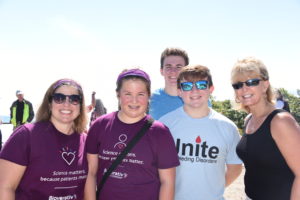

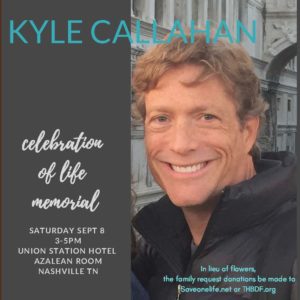 han. Kyle, a 52-year-old with hemophilia, passed away suddenly on August 26. For a man who had survived so much in his life, and engaged in outrageous adventures and high-speed fun, it was stunning news.
han. Kyle, a 52-year-old with hemophilia, passed away suddenly on August 26. For a man who had survived so much in his life, and engaged in outrageous adventures and high-speed fun, it was stunning news.
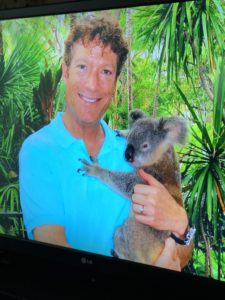 m revenues of $30 million to over $1 billion.
m revenues of $30 million to over $1 billion.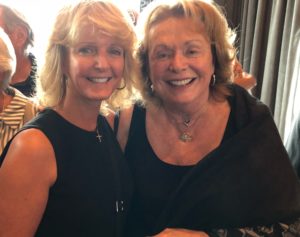
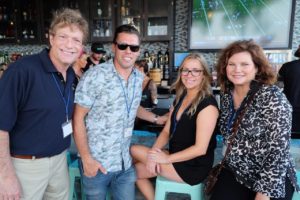
 r in Australia.
r in Australia.

